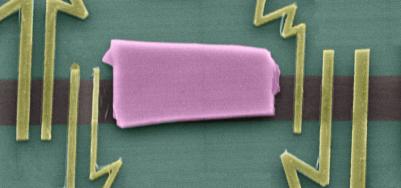KAIST researchers show how to use graphene as an active spintronic component
Researchers from the Korea Advanced Institute of Science and Technology (KAIST) have developed a new method to apply graphene as an active spintronic component for generating, controlling, and detecting spin current without ferromagnetic electrodes or magnetic fields.
The KAIST researchers observed highly efficient charge-to-spin interconversion via the gate-tunable Rashba-Edelstien effect (REE) in graphene heterostructures. The researchers used graphene stacked on top of a large spin-orbit coupling transition metal dichalcogenide material (2H-TaS2).



